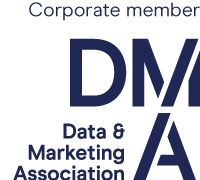Much of a list brokers best work doesn't come from recommending run of the mill lists, with a named senior contact; it involves lengthy research into premium data lists which have further insight into some function with the business. In this case, we are talking about fleet data.
Databroker have helped many companies to source high quality, accurate fleet lists including fuel card companies, tracking providers, vehicle manufacturers and retailers, corporate insurance providers and mobile telecoms firms.
Just like every data brief taken by Databroker, the secret in fleet data is in the detail. How large do the fleets need to be? Which contact is required? Do you need to know the specific type of vehicle and so on?
In my mind, there are three routes forwards when selecting a fleet brief and I always aim to provide all options within a data recommendation. Picking from the three options may boil down to cost, volumes or most likely the specificity of the data available.
Route 1
Let's start with the most cost-effective option in terms of per thousand rates. In-vehicle speak this is a 03 plate hatchback in reasonable condition, a couple of scratches on the bodywork, over 100,000 miles on the clock, with a decent service history. It will get you from A to B, don't expect luxury but equally, you won't have paid for it!
Route 1 uses data suppliers who only have modeled fleet data. This means they have researched a small part of their file for fleet information and then apply this model to the whole file based on trends by industry, number of employees, turnover and location. In terms of potential volumes, these depend on the list supplier and the brief but might range between 100,000 records and potential double or triple that. Let's take a look at the positives and negatives…
Positives:
- Lower cost per record
- High volumes, possibly ideal for a less specific campaign
- Data accuracy (in terms of contact information) will still be relatively good
Negatives:
- High wastage because the actual fleet size is unknown
- Difficult to run specific detailed campaigns because of inaccuracies in the model
- Cost per actual prospect is a lot higher than the rate paid because of the wastage
- Decision-makers are often a senior contact and not one verified as being a fleet decision-maker
Overall with Route 1 for my money the negatives out-way the positives for most clients. However, if you're retailing a low-value item or if you just want the widest coverage and reach, this approach can work. If your campaign needs more specific selections, Routes 2 or 3 are the only way forward.
Route 2
This will be a supplier who holds decent quality actual fleet data within their file. In-car terms this is a 2-year old, high-end 5-door saloon, it has had one careful owner, a full dealership service history, cruise control and reasonable mileage. It's a safe buy and often the one which many clients choose.
This type of file is gathered through online and telephone verification but the actual size of the fleet is collected for all the companies on the file. The main difference between Route 2 and Route 3 is likely to be how regularly the file is updated.
Having the overall size of the fleet means you can run specific multi-channel marketing campaigns at different parts of the dataset, without wastage or drop off. How does this type of file measure up in terms of good and bad points…
Positives:
- Accurate size of fleet information
- Good trade-off between volumes, cost and accuracy
- Often produces the best ROI of the three options
Negatives:
- 12-month recency on many files, so contact information may be outdated
- Higher cost per record than Route 1
Route 3
Finally Route 3, the creme de la creme option. This sees the very highest quality fleet lists, both in terms of the information they gather and the recency of contact. Back to the car analogy, we're talking about a high-end luxury saloon, full leather interior, all mod cons including a minibar and a chauffeur.
These top-end fleet files often hold more detailed information, such as a breakdown of the type of vehicle, details on the ownership of the fleet and even flags for FTSE or Top 5000 companies.
Many of Databroker's clients choose this route because they know that the best data is absolutely key for any campaign and without it, the rest of the process can fall down.
Positives:
- The highest levels of accuracy
- Often a 1-4-1 replacement of all inaccurate records
- Niche fleet selections such as fleet ownership etc.
- Best recency of contact
Negatives:
- Higher costs which can put some clients off
- Volumes are often the smallest, because of the specificity of data collection
Overall, you can see three clear pathways for fleet campaigns. There are no wrong answers here - each route is the correct one for some campaigns and that's where we come back to the detail. A quality list broker takes the time to understand your brief, research your campaign and request copies of the collateral, so that they are recommending the route which fits the bill.






